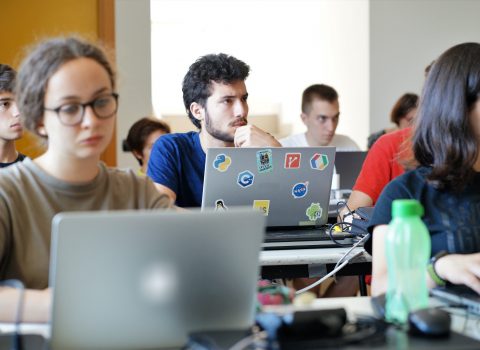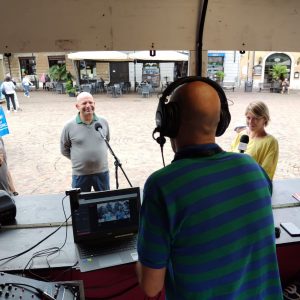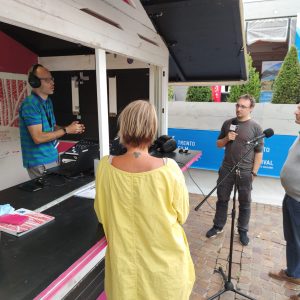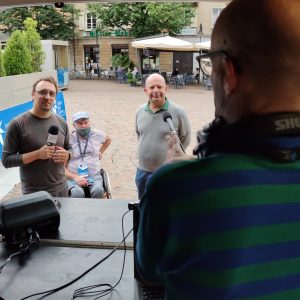
What’s the weather like in Trentino today? Ask the chatbot!
The last Trento Film Festival science café focused on the work in progress between Meteotrentino and FBK to make the short-term forecasts ever more accurate and on the new ways to learn about them
Should I take take the umbrella? Looking out the window is often not enough, there is a need for a broader view that goes beyond visual obstacles. And, to know how much rain we will get before running our next errand downtown, we can rely on a technique called “nowcasting”, the weather forecast in the very short term. A tool that helps understand whether or not it is appropriate to run for cover and, at the same time, to prevent dangerous situations. In fact, the service offered by Meteotrentino can be used by the general public via chatbot or app – look for Meteo Trentino on Telegram or on the app stores – and by the Civil Protection to warn citizens of potential hazards, allowing them to take action in advance. Gabriele Franch, a researcher with Fondazione Bruno Kessler, and Andrea Piazza, a meteorologist from Meteotrentino, talked about this to the microphones of Radio Dolomiti, during the last science café of the Trento Film Festival.
The joint effort of the two local organizations is mainly due to the need to make nowcasting more and more accurate: “In particular, our collaboration stemmed from the desire to improve our radar system – Piazza explained – which until recently was based on a plain linear translation of the latest images“. Basically, the rain trend detected by satellite images was projected forward in time. However, this implies a low level of accuracy since the systems that create this type of projections are not able to correctly model the complex intensity variation dynamics in the rain field. This is where the work of research specialized in artificial intelligence and deep learning can contribute: “Machine learning models work well in this type of situation – Franch said – because they can learn from examples. To address Meteotrentino’s needs on this area, we obtained the past 10 years of radar archives and trained a model for short-range forecasting which is currently very reliable over the next 30 minutes“. So, we might ask ourselves: why is it not possible to predict the next couple of hours or days in the same way? “We are working on it – the FBK researcher went on – and to obtain that we are trying to use as much data as possible. The current model uses only radar data relating to rain, but if we could combine the measurements of weather stations, the geolocation of lightning and other elements useful for the definition of meteorological phenomena, we could be more accurate in current conditions and rather reliable in the very short term. Long-term forecast is much more complicated as the variables increase dramatically and the level of detail on how rain is going to move is currently very complex to figure out”. The system, as shown by recent interventions in some areas in Fassa valley, can significantly improve the work quality of the Civil Protection as well as weather event related safety in general. In addition to this research, we are developing a Bot on Telegram (already available) which, exploiting the potential of nowcasting, will allow the submission of automatic warnings for adverse weather events. These services are now mainly dedicated to operators and experts but will soon be made available to anyone who needs them, be they tourists or farmers.
Basically, science does not seem to be able to help us with the planning for the next weekends yet, but on the issues of safety and short-term forecasts, what we are doing now lets us look to the future with confidence.
The full video of the Science Café at the Trento Film Festival (September 2, 2020)::






